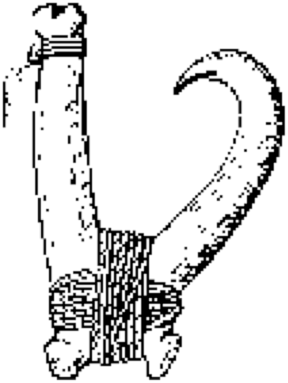Sturgeon Fishing with a Circle Hook
Fishing hooks have probably been around for around 40,000 years. The earliest of these were likely made of wood and thus did not survive. Metal and bone hooks were found in Norway which were dated at about 9,000 years old. In general, fishing hooks all have the basic “J” style bend. There is another hook shape which truly separates itself from the crowd. It is the circle hook, and there is nothing new about it.
Key Takeaways
- Circle hooks improve fish survival rates. Their inward-pointing design minimizes deep hooking, making them safer for catch-and-release sturgeon fishing.
- Sustainable fishing matters. Using circle hooks helps protect sturgeon populations in rivers like the Snake and Salmon, ensuring future generations can experience these ancient fish.
- Proven performance on the river. Winding Waters River Expeditions reports every sturgeon caught with circle hooks was safely hooked in the mouth corner, preventing injury.
- A conservation-first approach. Barbless circle hooks align with “leave no trace” and sustainable fishing principles—vital for maintaining balanced river ecosystems.
- Preserving tradition through responsible angling. Switching to circle hooks honors the heritage of sturgeon fishing while protecting the species for future anglers to enjoy.
Modern Day Circle Hook
Ancient Circle Hook
Here we have two examples of circle hooks. The illustration is of a circle hook carved from human bones on Easter Island and the photo is of a modern circle hook made by humans in a factory.
The circle hook works. Because the bend in the point of the hook curves in towards the shaft, the hook will not grab onto to any surface that does not extend outwards. Basically, a fish can swallow the hook and it won’t catch on anything except the fish’s jaw, usually in the corner of the mouth. In some states like North Carolina, circle hooks have become mandatory for older gamefish like the Red Drum because the chance of ‘deep hooking’ one of these fish in its stomach, throat, or gills is substantially lower with a circle hook than with a “J” style hook.
On our Hells Canyon and Salmon River trips our guides and clients often enjoy getting to catch and see a white sturgeon. These modern dinosaurs grow in excess of ten feet and can be well over 100 years old. They are truly a magnificent animal. The sturgeon population in the Snake River is not doing as well as in the Columbia where anglers can keep fish between 43” and 54”. Many anglers and adventurers experience this stretch on our Hells Canyon 5-Day Rafting Adventure. In the Salmon and Snake Rivers no Sturgeon can be kept or removed from the water and it is mandatory to use barbless hooks to aid anglers in safely releasing fish.
At Winding Waters River Expeditions we have switched to using circle hooks for Sturgeon so that we reduce the chance of injuring one of these freshwater giants. The circle hooks have been tremendously effective at hooking up and retaining the fish. In the last two seasons every single sturgeon we have hooked using circle hooks has been hooked in the corner of the fish’s mouth and did not injure the fish. We believe in sustainable fisheries, leave-no-trace camping, and doing right by the animals that live in the places we love. These same stewardship values guide all our trips, from Grande Ronde River Rafting to our Salmon and Snake River adventures. Last June, my friends and I caught a sturgeon at Dug Bar on the Snake River where my grandpa, Doug Tippet, grew up. As a boy his family subsisted on sturgeon meat for some parts of the year. He once caught a sturgeon that was too big for him to carry so he loaded the fish onto his pony and brought it home. I can only imagine how proud he must have felt. The fish we caught last year in that same part of the river was most likely already between 20 and 30 years old when my grandpa was puffing out his ten year old chest leading his burdened pony up the trail to his home in the canyons. Will our grandchildren be able to catch sturgeon in the Snake River? If we all use circle hooks, it is a step in the right direction.
Call us if you want to go Sturgeon fishing and see how these Circle Hooks Work. You can also join one of our guided white water rafting trips to explore these incredible Northwest rivers up close.
Frequently Asked Questions
Learn more about using circle hooks for sturgeon fishing and why they’re vital for protecting these ancient river giants.
What is a circle hook and how is it different from a regular hook?
A circle hook has a curved point that turns inward toward the shank, unlike the traditional “J” hook. This design makes it more likely to hook fish in the corner of the mouth rather than deep in the throat or stomach, reducing injury and increasing survival rates during catch and release.
Why use circle hooks for sturgeon fishing?
Circle hooks greatly reduce the risk of deep hooking, which can harm sturgeon. Because sturgeon are protected in many rivers, using circle hooks helps anglers safely release fish without injury, supporting long-term conservation of these ancient species.
Are circle hooks required for sturgeon fishing?
In some rivers and states, yes. For example, on the Salmon and Snake Rivers, it’s mandatory to use barbless hooks and follow catch-and-release rules for sturgeon. These regulations help preserve the population and ensure sustainable fishing practices.
Do circle hooks work as well as traditional hooks?
Yes. Circle hooks are highly effective for sturgeon fishing. They maintain strong hook-up rates while minimizing harm. At Winding Waters River Expeditions, every sturgeon caught with a circle hook in recent seasons was hooked cleanly in the corner of the mouth, proving their reliability.
Can you keep sturgeon caught in the Snake or Salmon Rivers?
No. Sturgeon caught in the Snake and Salmon Rivers must be released immediately and cannot be removed from the water. This rule protects the population, allowing these long-lived fish to continue thriving in their natural habitat.
How large can white sturgeon grow?
White sturgeon are among the largest freshwater fish in North America. They can grow over ten feet long and live for more than 100 years. These impressive “modern dinosaurs” are a thrilling catch for anglers, even under strict catch-and-release rules.
Why is sturgeon conservation important?
Sturgeon populations have declined in some rivers due to overfishing and habitat loss. Conservation measures—like using circle hooks and catch-and-release practices—help ensure future generations can experience catching these incredible fish. Responsible angling supports both recreation and ecosystem balance.
How do circle hooks help sustainable fishing?
By reducing deep hooking and injury, circle hooks improve post-release survival rates. This simple switch makes a big difference for species like sturgeon, allowing anglers to enjoy fishing while helping sustain healthy fish populations for the future.
Can beginners use circle hooks effectively?
Absolutely. Circle hooks are easy to use once you understand their technique. Instead of a sharp hook set, anglers simply let the fish take the bait and apply steady pressure—allowing the hook to naturally set in the fish’s mouth.
Where can I try sturgeon fishing with circle hooks?
You can experience sturgeon fishing using circle hooks with Winding Waters River Expeditions on the Snake or Salmon Rivers. Their guided trips emphasize sustainable fishing and conservation, giving anglers a chance to catch and release these magnificent fish responsibly.
The post Sturgeon Fishing with a Circle Hook appeared first on Winding Waters River Expeditions.







